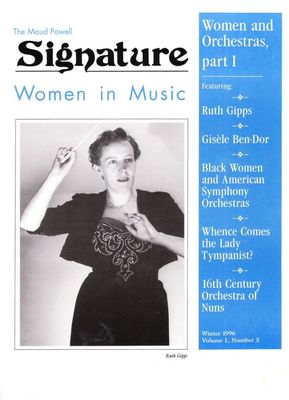A Woman in Music
music and gender
1954 saw the publication of the third musical setting of “Goblin Market,” this one by British composer Ruth Gipps (1921-99), the first female composer to write a setting of this complex poem. Gipps was a musical prodigy, concert pianist, oboist, conductor and prolific composer, but she suffered from gender discrimination in the male-dominated musical world. Even today, her impressive compositions remain unjustly neglected. Although she personally distanced herself from feminism, her life experience, personality, and musical career were at every turn conditioned by the resistance and discrimination she encountered as a female conductor and composer. Taking a woman’s musical perspective on Rossetti's poem, Gipps breaks new interpretative ground, and her musical interpretation can be seen as a harbinger of the critical recuperation of “Goblin Market” by feminist literary critics that would follow in later decades.
text and music
Gipps chose the same musical genre for her setting of “Goblin Market” as did previous composers Aguilar and Ricci, setting the poem in cantata form to be performed by two soprano soloists (with the SOLO I line as Laura, and SOLO II as Lizzie) and female three-part chorus accompanied by string orchestra or piano. Notably, like the previous two “Goblin Market” cantatas, Gipps’s cantata is arranged to be sung exclusively by voices in the treble range; however, unlike Aguilar’s setting, Gipps’s is clearly intended for adult performers and audiences, a distinction that allows the composer license to explore and emphasise the poem’s layers of sexual meaning more freely.
In an address to fellow composers, Gipps remarked on her approach generally to the text/music relationship: “The music exists for one purpose—to make the listener feel the mood of the story and the meaning of the words” (qtd. in Halstead, p. 125). In the case of her Goblin Market cantata, Gipps personally selected Rossetti’s poem and presumably undertook the textual adaptations as well. We might conjecture that Gipps’s deeply felt experience of gender-based opposition is reflected in her selection of a poem that sets male goblins in opposition to two sisters. Gipps’s cantata is very sensitive to Rossetti’s text; but Gipps’s setting is also a “strong” reading of “Goblin Market,” one that offers a particular interpretation of the poem, reshapes understanding of it, charts new interpretive possibilities, and points toward a new direction in the poem’s reception history. In her monograph Ruth Gipps: Anti-modernism, Nationalism and Difference in English Music, Jill Halstead explores how Gipps’s setting highlights female experience and especially female responses to sexual desire, temptation, experience and recovery, an interpretive angle that makes this composition a significant and prescient innovation in the critical history of this poem.
Source:
Halstead, Jill. Ruth Gipps: Anti-modernism, Nationalism and Difference in English Music. Aldershot, Ashgate, 2006.


